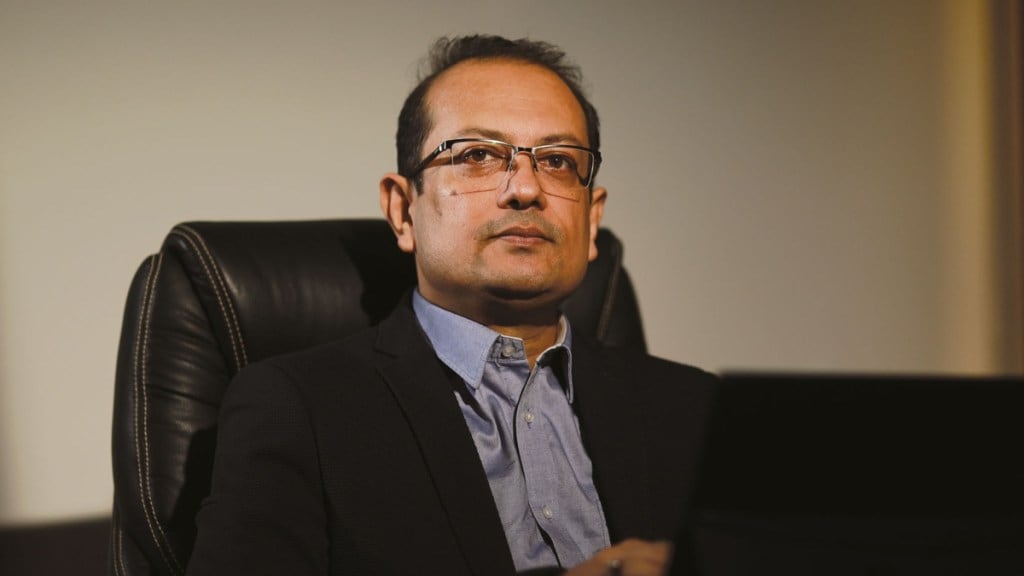Universal Sompo General Insurance reported 17% growth in its gross premiums to Rs 1,752 crore in the first four months of FY26, outpacing the industry’s 6.36% growth, despite a sluggish motor insurance market. MD & CEO Sharad Mathur tells Narayanan V about the key segments driving this momentum and the company’s strategy for sustaining it. Excerpts:
Which segments are contributing to your premium growth?
Our gross written premium (GWP) has grown by 17% in Q1. Motor insurance share is at a similar level as last year, at 45%. We have seen a strong performance in health insurance, which has grown to 38% in Q1 and it aligns with our strategic intent to expand our health portfolio. Our commercial lines — property, fire, marine, and liability — have shown a significant uptick. These contributed 9% in the previous fiscal year and have now risen to 16% in Q1. We expect health and commercial lines to be our primary growth drivers this year. We are also comfortable in maintaining motor at current levels.
But motor premiums have been muted across the industry.
We see two key reasons shaping the current motor insurance market. First, new vehicle sales declined by approximately 5% in Q1FY26 versus the same period last year. We expect a rebound in the coming quarters, which should aid new business growth. Second, on renewals, there has been significant discounting across the industry to attract more customers. It may boost policy volumes but moderate the premium growth. Even if more vehicles are insured, the absolute premium collected may appear stagnated due to lower average pricing.
Only 30% of our motor business is from new vehicles, while the remaining 70% is rollover and renewal business. We are witnessing a positive trend in uninsured vehicles coming into our fold, particularly from our allocated state of Andhra Pradesh. In rural markets, we are observing a notable segment of customers who had insured their vehicles two years ago but skipped renewal last year, now returning to renew their policies. This segment is significantly contributing to the growth of our renewal and rollover portfolio, which is expanding at a faster pace than our new business.
Has the absence of a price revision in motor third-party premiums impacted you?
This is a critical issue because the industry operates with a shared premium pool from which claims are paid. If products are not priced appropriately, it puts pressure on this pool, especially when claims exceed the available premium. When the pricing is inadequate, the ability to honour claims can become constrained. I believe it’s time for all concerned authorities to seriously consider price adequacy, not merely as a “price hike,” but as a necessary adjustment to maintain the financial health of the insurance ecosystem. The goal is to ensure long-term serviceability to policyholders, not just focus on profitability. It’s important to note that the last major price revision happened about three years ago, so a correction is overdue.
Health now makes up over a third of your portfolio, up from 13% in Q1FY25. What’s driving this growth?
There is sustained and rising demand for health insurance, which remains the fastest-growing and now the largest business line for both the industry and Universal Sompo. We are actively growing our group business, especially through partnerships with large corporates. Our performance in commercial lines (property) has shown strong momentum, growing to 16% in Q1 FY26, up from 9% for the entire last fiscal. Group health insurance is also happening as corporate clients prefer comprehensive insurance programs for both their assets and employees. On retail health, we have taken a focused, long-term view. We are making strategic investments in brand-building and outreach. We aim for a 70:30 split between retail and group health. While group health may not be highly profitable on its own, the non-health risks of the corporate portfolio, such as fire and marine insurance, make the overall commercial book sustainable.
What is your premium growth target for FY26?
We are targeting a top-line of approximately Rs 6,000 crore for the current fiscal, up from Rs 5,000 crore in the previous year. That said, we are not chasing top-line growth at the expense of sustainability. A good example is our approach to crop insurance. Last fiscal, crop contributed 25% to our Q1 top-line, but due to pricing challenges and an industry-wide race to the bottom, we chose not to participate in Q1 this year, resulting in 0% contribution from crop during the current quarter. Despite that, we still achieved 17% growth in Q1, which shows that our growth is well-diversified and not overly dependent on a single line of business.

